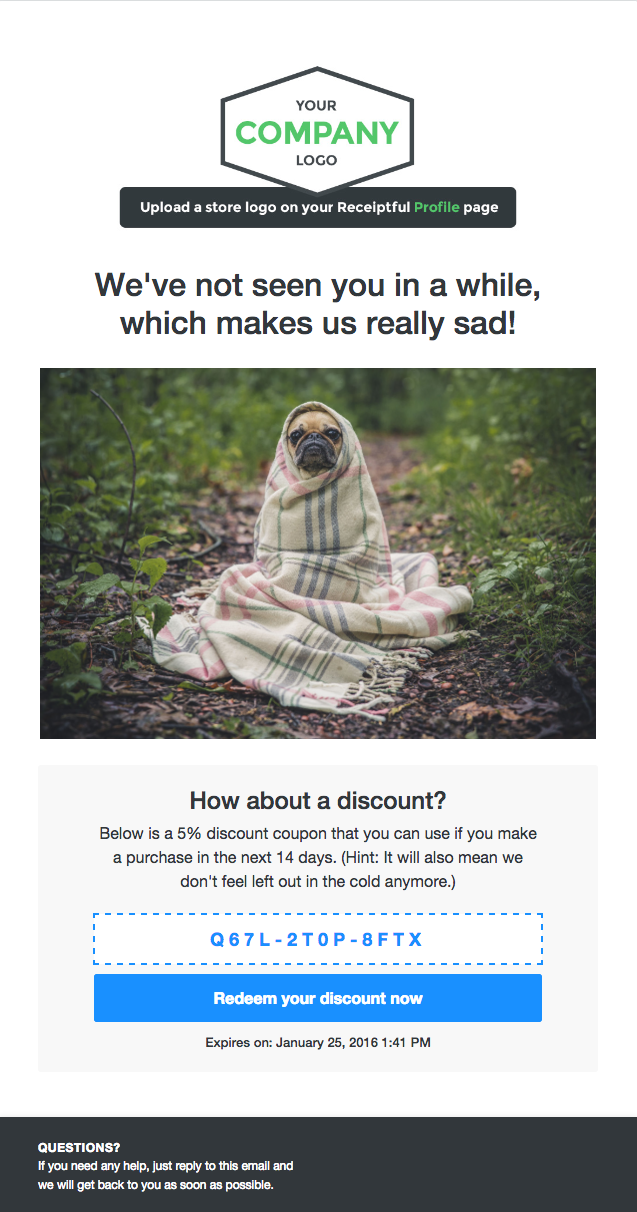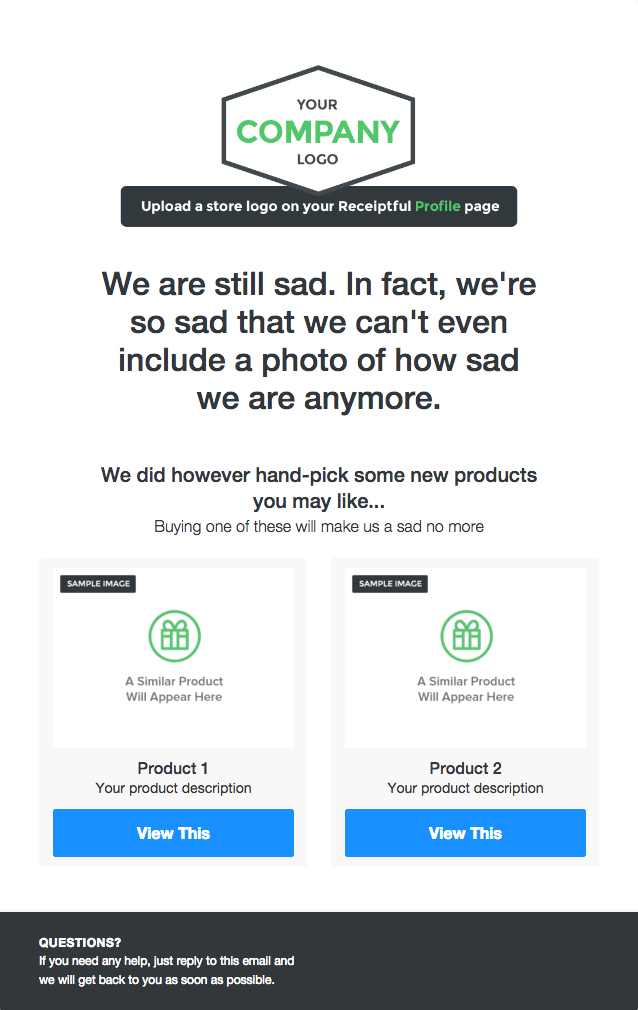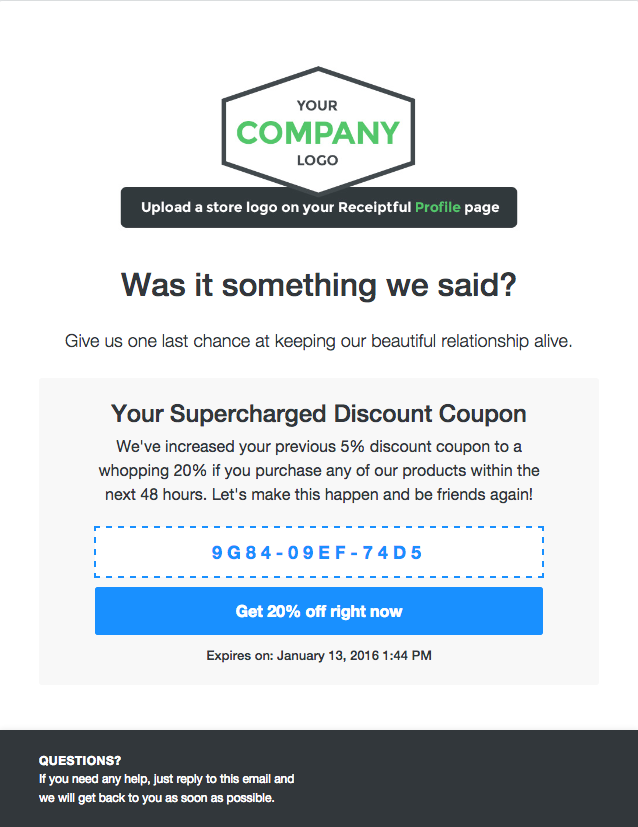Retain Your Customers With Win-Back Emails
I’m 100% sure that you’ve heard this line before:
“Acquiring a new customer costs you X times more than what it costs you to retain an existing customer.”
Depending on which source is quoted, that “X times” ranges anywhere from 3x – 7x, which immediately puts me in cautious mode. I mean – who should I trust?
As an entrepreneur myself, my main consideration with customer retention has always been the fact that the lifetime value of my customers are the most important metric that I should be looking at. In the context of Ecommerce there’s two drivers to increase Customer Lifetime Value (learn more about this in our free eBook):
- Increasing the Average Order Value when customers make a purchase; and
- Increase the frequency at which customers make repeat purchases.
The latter goal though becomes especially hard to achieve when you consider that only a percentage of your first-time customers will convert into repeat customers. And on top of that, many of your customers will just become inactive over time, which means that they don’t make any repeat purchases and eventually they just start ignoring your e-mails or any other form of communication.
The question thus becomes one of keeping these customers engaged and specifically re-engaging customers that have already become inactive.
Let’s first look at Customer Segmentation…
If you did any research of customer segmentation, you’ll likely find a whole bunch of different definitions that are a partial variant of the same thing. At CM Commerce, we use these Customer Segments:
- Potential Buyers. Someone that hasn’t made a purchase yet.
- First-time Buyers. Someone that is making their first purchase or has made one purchase.
- Repeat Customers. A customer with multiple purchases.
- Active Repeat Customers. Customers with multiple orders and their time since last order less than average time between orders (for all customers)
- “At Risk” Repeat Customers. Customers with multiple orders and their time since last order more than average time between orders (for all customers), but less than 3X average time between orders.
- Inactive Repeat Customers. Customers with multiple orders and their time since last order more than 3x average time between orders (for all customers)
When we’re thus talking about “Win-Back Emails”, we’ll be targeting two customer segments: primarily Inactive Repeat Customers, but also “At Risk” Repeat Customers. In both cases, these are customers that made multiple purchases with you, but subsequently became inactive and stopped purchasing from you (for whatever reason).
Crafting Win-Back Emails
We’ve just introduced a default win-back e-mail campaign (that is part of our Follow-up Emails functionality) that looks like this:
First Email
This email is sent on the day that the customer becomes inactive / idle and includes a 5% discount coupon (which is valid for 2 weeks) to entice the customer to come back to the store.

Second Email
This email is sent 7 days after the customer becomes inactive / idle. Here we include some personalised product recommendations as an alternative approach to the discount in the first email, whilst still referring back to the original email we sent a week prior (which still includes the discount coupon that can still be used).

Final Email
This email is sent 15 days after the customer becomes inactive / idle and it is designed to be a “Hail Mary!”. Since the initial 5% discount coupon has now expired, we now include a new 20% discount coupon that is only available for the next 48 hours. The aim here is to use some urgency to get inactive customers to take action.

A few general notes about these e-mails:
- You’ll see that we’re using colloquial, emotive language throughout. This alongside the emotive image of our (sad) pug is designed to tug at the heart strings of your inactive customers.
- If the customer reacts to the first email in the sequence and makes a purchase, they will not receive any subsequent emails in the sequence.
- If you’d like to learn more about win-back email campaigns, you can definitely take a look at this resource.
Are you ready to increase your customers lifetime-value? Then keep on learning by reading our free ebook: